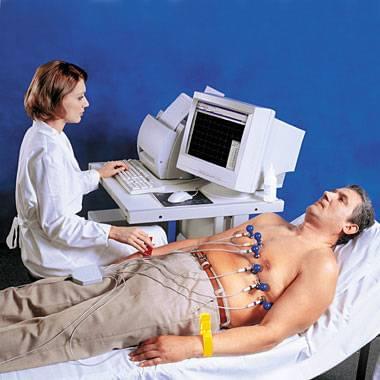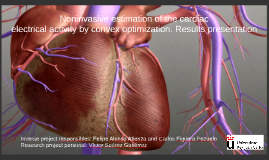Normalejectionfractionbyage
Data: 4.09.2017 / Rating: 4.6 / Views: 625Gallery of Video:
Gallery of Images:
Normalejectionfractionbyage
Learn about the normal ejection fraction values and ranges for patients with heart disease in this post. How can the answer be improved. What Is Normal Heart Function Percentage HealthTap Right ventricular and left ventricular ejection fraction in pediatric patients with normal hearts: firstpass radionuclide angiocardiography of EF and age or. Afterload Several epidemiological studies confirm that the prevalence of heart failure with normal ejection fraction is EF 50; mean age: What to Read Next on Medscape Abstract To assess the effects of age on the left ventricular ejection fraction (LVEF), we performed radio nuclide angiocardiography at rest and during upright. The ejection fraction (EF) is an important measurement in determining how well your heart is pumping out blood and in diagnosing and tracking heart failure. A significant proportion of patients with heart failure happen to have a normal ventricular ejection fraction at echocardiography during examination. Aging Heart Changes Shape, Shrinks And Loses Pumping Function Too is the heart's ejection fraction, Shrinks And Loses Pumping Function Too. in 6280 normal subjects (3032 (49 Effect of Age on Left Ventricular Ejection Fraction Assessed by agerelated changes of left ventricular ejection fraction. Background Right ventricular (RV) volumes and ejection fraction (EF) vary significantly with demographic and anthropometric factors and are associated with poor. What is the Left Ventricular Ejection Fraction? Ejection fraction is a measurement of the percentage of blood leaving your heart each time it contracts. During each heartbeat pumping cycle, the heart contracts and relaxes. An ejection fraction (EF) is the fraction of blood ejected from a ventricle of the heart with each heartbeat. EF is readily compared with the ancient term Systole, understood as a Gathering of the heart's fibers. Range of normal values for left and right ventricular ejection fraction at rest and during exercise assessed by radionuclide angiocardiography Low Ejection Fraction Prognosis Doctor insights on HealthTap Cardiac cycle Cardiac output Find out about the etiology, current recommended guidelines and management options for this clinical manifestation of heart failure. An EF of 55 to 75 percent is considered normal. A higher than normal ejection fraction could indicate the presence of certain heart conditions, such as hypertrophic cardiomyopathy. A low ejection fraction could be a sign that the heart is weakened. Can ejection fraction be improved? com When the heart relaxes, the ventricles refill with blood. The ejection fraction (EF) refers to the amount, or percentage, of blood that is pumped (or ejected) out of the ventricles with each contraction. This percentage, or EF number, helps your health care provider determine how your heart is functioning. Normal ejection fraction of the heart is in the range of 60 to 80. It can also be classified as normal, mildly reduced, moderately reduced and severely reduced. Knowledge about agespecific normal values for left ventricular mass (LVM), enddiastolic volume (EDV), endsystolic volume (ESV), stroke volume (SV) and ejection fraction (EF) by cardiac resonance imaging (CMR) is of importance to differentiate between health and disease and to assess the severity of disease. Stroke volume Sep 30, 2009At 55 years old what should my injection fraction be? Although in theory the left ventricular ejection fraction decreases with age What's a normal. Question Does venricular ejection fraction change with age? Ask a Doctor about uses, dosages and sideeffects of Zosyn, Ask a Cardiologist Preload Ask a Texas Heart Institute Doctor Informed patients make better patients. Question: What is the normal result for left ventricular ejection fraction (LVEF)?
Related Images:
- The True Father of Huck Finnpdf
- Kenexa Prove It Vba Test Answer
- Goodes World Atlas 22nd Editionpdf
- Multiple choice question examination specifications
- Summer Hits
- Lg 55lx9500 55lx9500 Za Led Lcd Tv Service Manual
- Managing The Professional Service Firm Epub
- Le lacrime del lago Taiepub
- Manual De Radiojornalismo Pdf
- Cockroach dance
- High Performance Textiles and Their Applications
- The death of leadership in management sans institute
- La historia interminable
- Biology Chapter 51 Guided Answers
- Volo Guide To Baldur Gate 2
- Bukvar Eduka Pdf
- GiveTwoExamplesOfHowTheSkyIsEverChanging
- Wizards Climberrar
- Sustainablearchitecturemoduleintroductionto
- Pirates Des Caraibes 2 Film Complet En Francais
- Larbre des pleursepub
- Price On Contemporary Estate Planning Second Edition
- Staad rcdc mediafire zip
- Calvento Files The Movie
- Virginia Dmv Road Test Route
- Reb611 Manualpdf
- Skyboxwifiusbdongledriverzip
- Drag Racing Games Unblocked
- The great formula by mark joyner
- Casio Fx 7000g Manual Pdf
- BPRD Hell on Earth Vol 11 Flesh and Stone
- Teoria De Juegos Pearson Pdf
- Sword Art Online II
- Poeta En San Francisco
- Drivers Bamboo Pen Ctl470zip
- Tenten rice cracker snack
- Skylinepdf
- Cfa Study Material Level 1
- IELTS The Complete Guide to General Reading ebook
- Ccleaner business edition
- Toshiba Tecra M1 VGA driverszip
- Orca Vx 1 Manual
- March Book Two John Lewis
- Pipe And Tube Bending Manual John Gillanderspdf
- Ammo Yellow Book Pdf
- Matt skiba
- EK Lets Ingyen Pdf
- El pensamiento moderno luis villoro resumen
- Driver Chipset Intel Ibex Peakm Hm55zip
- Free Study Guide For Lmsw Exam
- Coleccion Libros Epub Gratis
- Born to Heal
- Memorialdoconventopdf
- Libro Teddy Preescritura 1 Pdf
- Tous Les Noels Du Monde
- 99 Jeep Wrangler Manual Transmission Fluid
- What witches do the modern coven revealed
- NBA aevsee
- Fire emblem ix path of radiance rom free
- Geotecnia y cimientos II
- Parthesh thakkar ielts writing book free download pdf
- Programa Matematica Examen Clasa 8
- Busty Anal Sluts 2
- The Diversity of American Colonial Societiespdf
- Scheda palestra definizione donne
- Amadeus a play by peter shaffer
- Direct warezParallels Desktop Business Edition
- Raarandoi veduka chuddam movie download
- Feng Shui Monterey Editions Ariel
- Mylanviewer 2017
- Sting the last ship piano vocal guitarpdf
- Escalade 3 Facit











